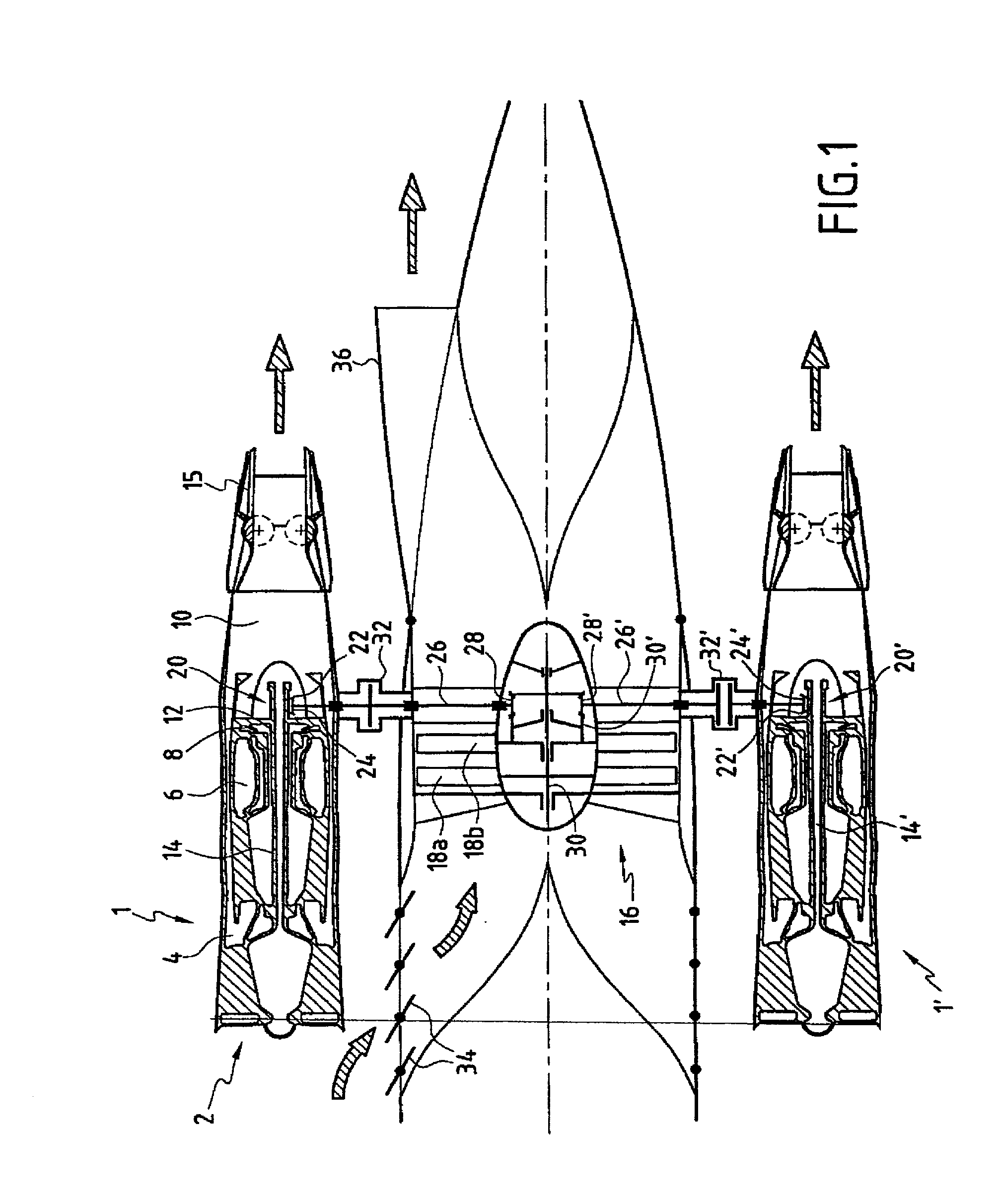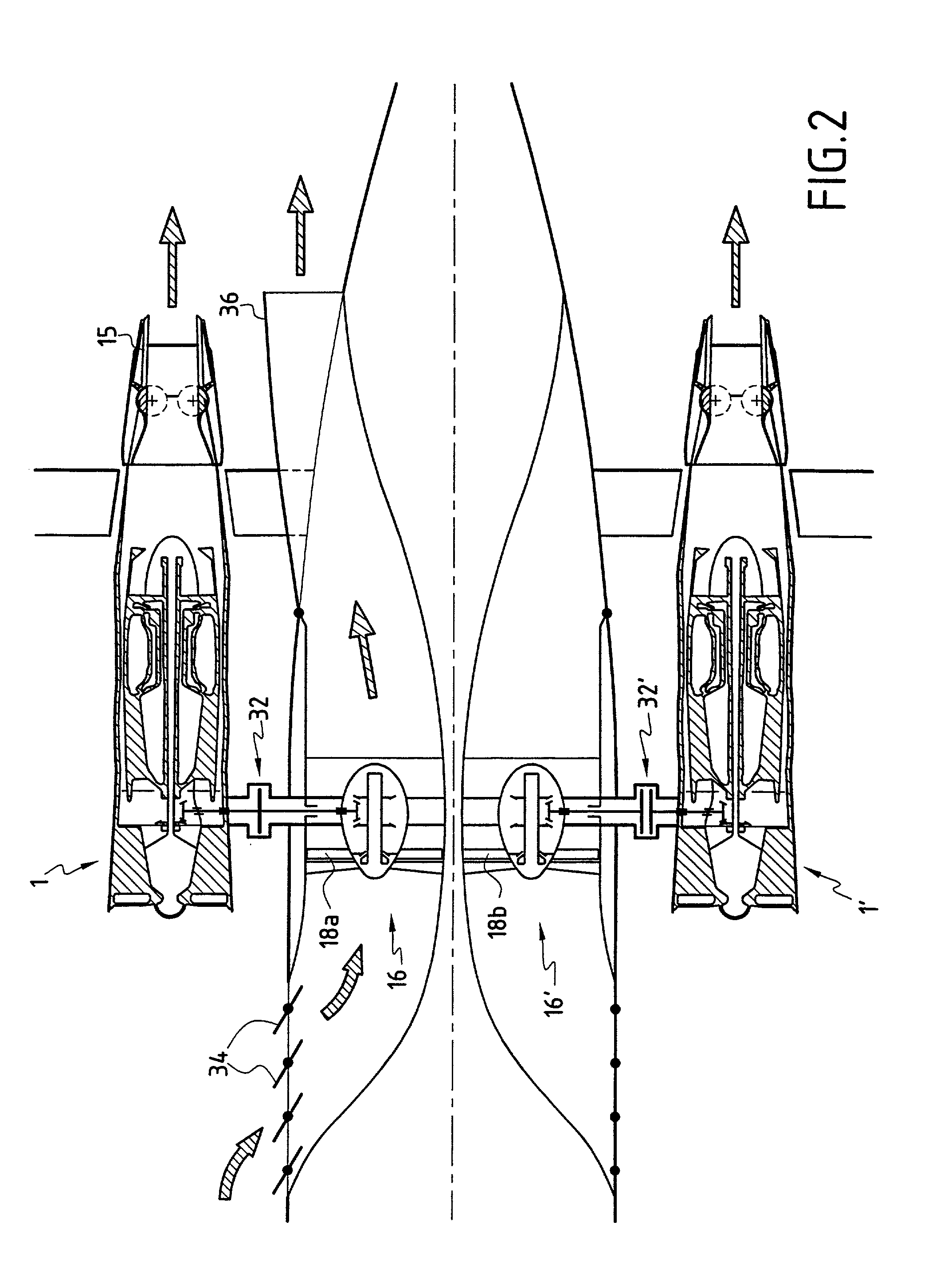Variable cycle propulsion system with mechanical transmission for a supersonic airplane
a technology of mechanical transmission and supersonic airplane, which is applied in the direction of machines/engines, vertical landing/take-off aircraft, aircraft navigation control, etc., can solve the problems of low airplane engine noise during takeoff, affecting the bulk and weight of the airplane, and the bypass ratio of varying designs cannot be good, so as to achieve the effect of reducing such drawbacks
- Summary
- Abstract
- Description
- Claims
- Application Information
AI Technical Summary
Benefits of technology
Problems solved by technology
Method used
Image
Examples
first embodiment
[0019] FIG. 1 is a diagrammatic longitudinal section view of a system constituting the invention, in which it can be seen that it is constituted in particular by two engines 1 and 1'. These engines are conventionally placed in pods (not shown) which are generally connected to the bottom faces of respective airplane wings.
[0020] In conventional manner, the engines can be of the single-flow type, having one, two, or three shafts, or of the double-flow type, having one, two, or three shafts. In this embodiment, each engine comprises an air intake 2, a compressor section 4, a combustion chamber 6, a high-pressure turbine 8, a section 10 for exhausting combustion gas, and a low-pressure turbine 12 which rotates a low-pressure shaft 14. Furthermore, the engines are dimensioned so as to be optimized for supersonic cruising flight (the period involving the longest flying time). The gas exhaust section is terminated by a nozzle 15 of variable section so as to be able to control the expansion...
second embodiment
[0031] In the invention (cf. FIG. 2), the propulsion system comprises two engines 1 and 1' independently controlling two auxiliary propulsion assemblies 16 and 16'.
[0032] As shown in FIG. 2, the fans 18a and 18b are each driven by a respective one of the engines 1 and 1' and they are housed separately in a rear portion of the airplane fuselage. For reasons of optimizing occupancy of the volume within the fuselage, it is possible for the fans to be offset one behind the other along the main axis of the airplane. In addition, closable louvers 34 are provided in the fuselage to enable the propulsion assemblies 16 and 16' to be fed with air, and deployable exhaust nozzles 36 enable that air to be exhausted in order to provide thrust during takeoff, landing, and subsonic cruising flight.
[0033] In the event of one of the propulsion assemblies failing, this embodiment makes it possible to continue driving the other auxiliary propulsion assembly.
[0034] Naturally, any other embodiment could ...
PUM
 Login to View More
Login to View More Abstract
Description
Claims
Application Information
 Login to View More
Login to View More - R&D
- Intellectual Property
- Life Sciences
- Materials
- Tech Scout
- Unparalleled Data Quality
- Higher Quality Content
- 60% Fewer Hallucinations
Browse by: Latest US Patents, China's latest patents, Technical Efficacy Thesaurus, Application Domain, Technology Topic, Popular Technical Reports.
© 2025 PatSnap. All rights reserved.Legal|Privacy policy|Modern Slavery Act Transparency Statement|Sitemap|About US| Contact US: help@patsnap.com



